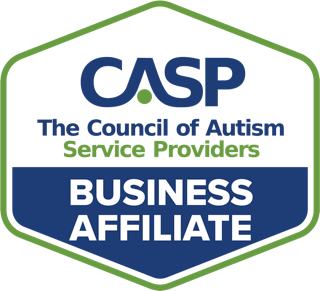Halloween is a child-centered holiday full of candy, costumes, and decorations. The same reasons Halloween can be fun and exciting for children may actually contribute to overstimulation and behavioral challenges for many children on the autism spectrum. Our team has created a downloadable Halloween Guide.
- Have a plan. Practice safety skills and know your route for trick-or-treating. Practice with your child beforehand
- Avoid the most crowded times for trick-or-treating by going early
- Let your child wear their costume ahead of time at home to prepare for sensory needs
- Limit the amount of time at each house and the overall trip
- Opt to stay home and have friends and family come to you! Your child can participate in handing out treats in their costume
- Wear costumes that reduce stimulation (i.e. wearing headphones or avoiding face masks)
- Encourage your child to communicate when they need a break from the activity
- Ensure dietary restrictions are accounted for by sending appropriate treats your child can receive to neighbors ahead of time
- Non-vocal children can carry a card with the words “Trick-or-treat!” when going door-to-door









